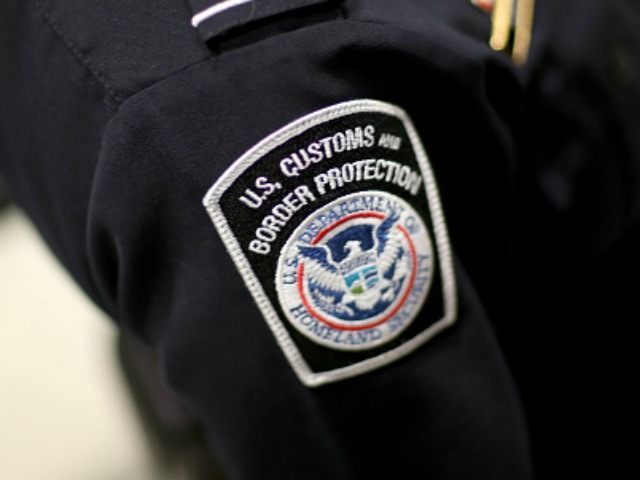
In a May 24 post, I explained how the crisis at the Southwest border is impeding Border Patrol’s ability to seize drugs that are being smuggled into the United States (although apprehensions of the uniquely deadly drug fentanyl are up this year). That crisis also appears to be driving a recent spike in Border Patrol search-and-rescue efforts, as migrants attempting to avoid apprehensions choose ever more risky routes, and smugglers engage in even more heinous acts.
Through April, agents at the Southwest border have performed 5,638 searches and rescues, already eclipsing the totals for all of FY 2020 (5,071) and all of FY 2019 (4,920).
There are many reasons why aliens who have entered illegally fall into distress, but migrants avoiding traditional entry routes to bypass encounters with the Border Patrol are almost definitely playing a major role.
At a May 13 Senate hearing, Sen. Rob Portman (R-Ohio) revealed that Border Patrol “conservatively estimates that over 40,000 people who crossed illegally got away and were not apprehended in April.”
Unlike asylum seekers who flock to the first agent they can find in order to be processed and released, so-called “got aways” are often single adults still subject to quick expulsion under Trump-era orders issued by CDC pursuant to Title 42 in response to the pandemic.
They often eschew the areas of the border in close proximity to large population centers (and therefore, to close proximity to help if they fall into distress). For example, writing about the “got away” phenomenon on May 3, my colleague Todd Bensman reported from Valentine, Texas (population: 86), smack dab in the Border Patrol’s massive (153,000 square mile) and remote Big Bend Sector.
Bensman explained: “Single adults, though still turned back under Title 42, have exploited the Border Patrol distractions with families or have gone to Big Bend Sector’s poorly defended frontier in hopes of joining the growing got-away ranks.”
Illegal migrants go to Big Bend for good reason. According to Bensman, agents in the area report that they only catch about one out of every 10 illegal migrants (at best) traipsing across the border there. Those who are injured or lost likely would not turn up in the rescue statistics, because nobody would know that they were there.
One female migrant in the area who was rescued, suffering with frostbite following the winter storm in Texas in February, was only located because she followed a dirt road and located a local rancher who notified authorities.
That rescue occurred six days after the woman had been ditched by a smuggler and left to the elements. A relative had called Border Patrol agents soon after she was abandoned, but despite their best efforts they were not able to initially locate her.
She was one of more than 200 people agents rescued during that unusually inclement weather, but Border Patrol could not save them all: Four were found dead, as attempted “rescues” became “recoveries”.
That woman’s story leads to the next reason why rescues have soared this year: The increased savagery and common cruelty of smuggling gangs.
The Wall Street Journal reported at the end of March on the tactics of one such group, which had placed 65 adults and 152 children on rafts crossing the Rio Grande near the “smuggler’s paradise” of Roma, Texas.
One adult was a Honduran woman who had claimed that she had her leg broken by a smuggler, but who nonetheless paid the smuggler’s $3,500 fee to get on one of those rafts.
Once those migrants and smugglers were on the river, Border Patrol agents and Texas officials appeared on the bank. So the smugglers threw an infant into the waters and capsized the rafts. That required agents and officers to scramble to save the migrants, and allowed the smugglers to escape.
I wrote about this case in April, but it was not a one-off instance of smuggler inhumanity.
Agents near Lordsburg, N.M., rescued a woman walking with two children on April 7. She explained that only one child was hers — she had found the other one, an eight-year-old boy, “walking aimlessly through the desert by himself”.
As El Paso Sector Chief Patrol Agent Gloria I. Chavez explained:
We find that Transnational Criminal Organizations routinely attempt to smuggle people in groups but often end up abandoning the women and children in remote areas where they are left in great danger and to fend for themselves when they can't keep up with the group. They are often left with no food or water.
On May 11, in Sierra Blanca, Texas, agents manning a checkpoint found 20 illegal migrants in the bed of a truck “covered by a hard plastic cover that was sealed shut” and in a trailer “that could only be opened from the outside, with no source of ventilation or space to move freely”. In addition to those 20 migrants, two “tender-aged migrant children” were also located in the trailer.
Unless and until the Biden administration gets serious about the situation at the border, Border Patrol rescues are going to increase as migrants attempt to enter this country illegally. Regrettably, deaths will, too.
